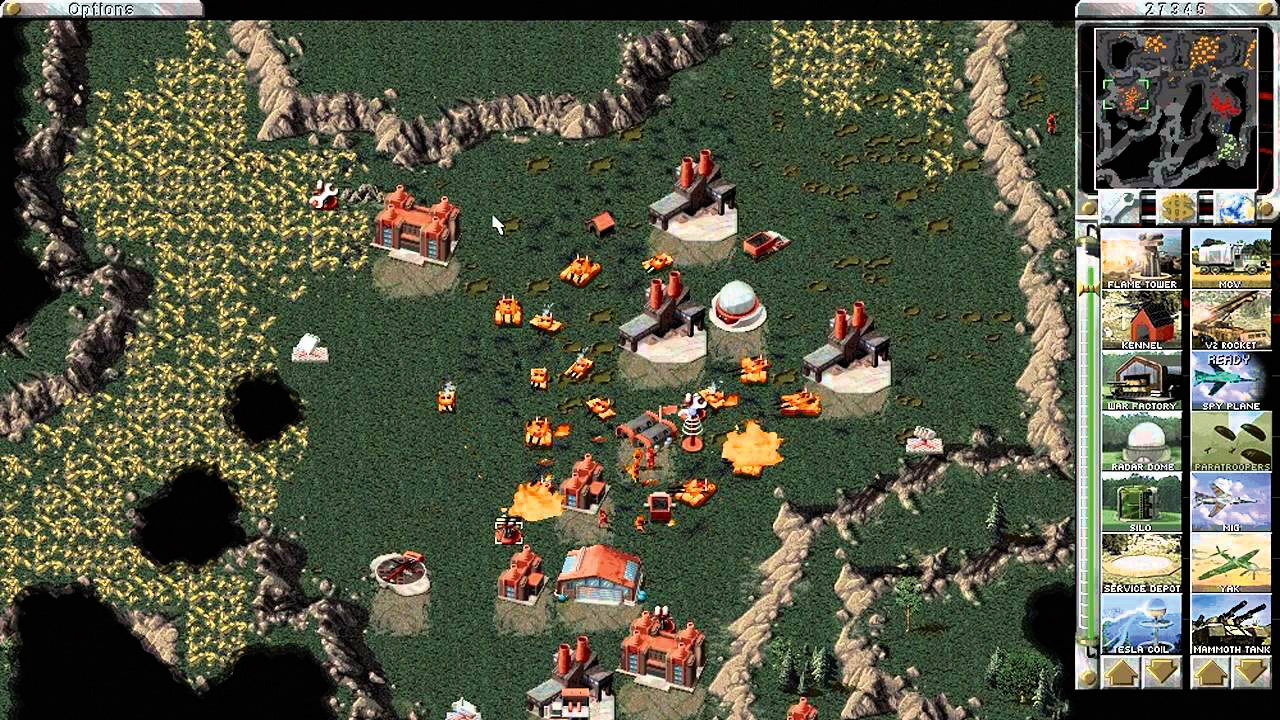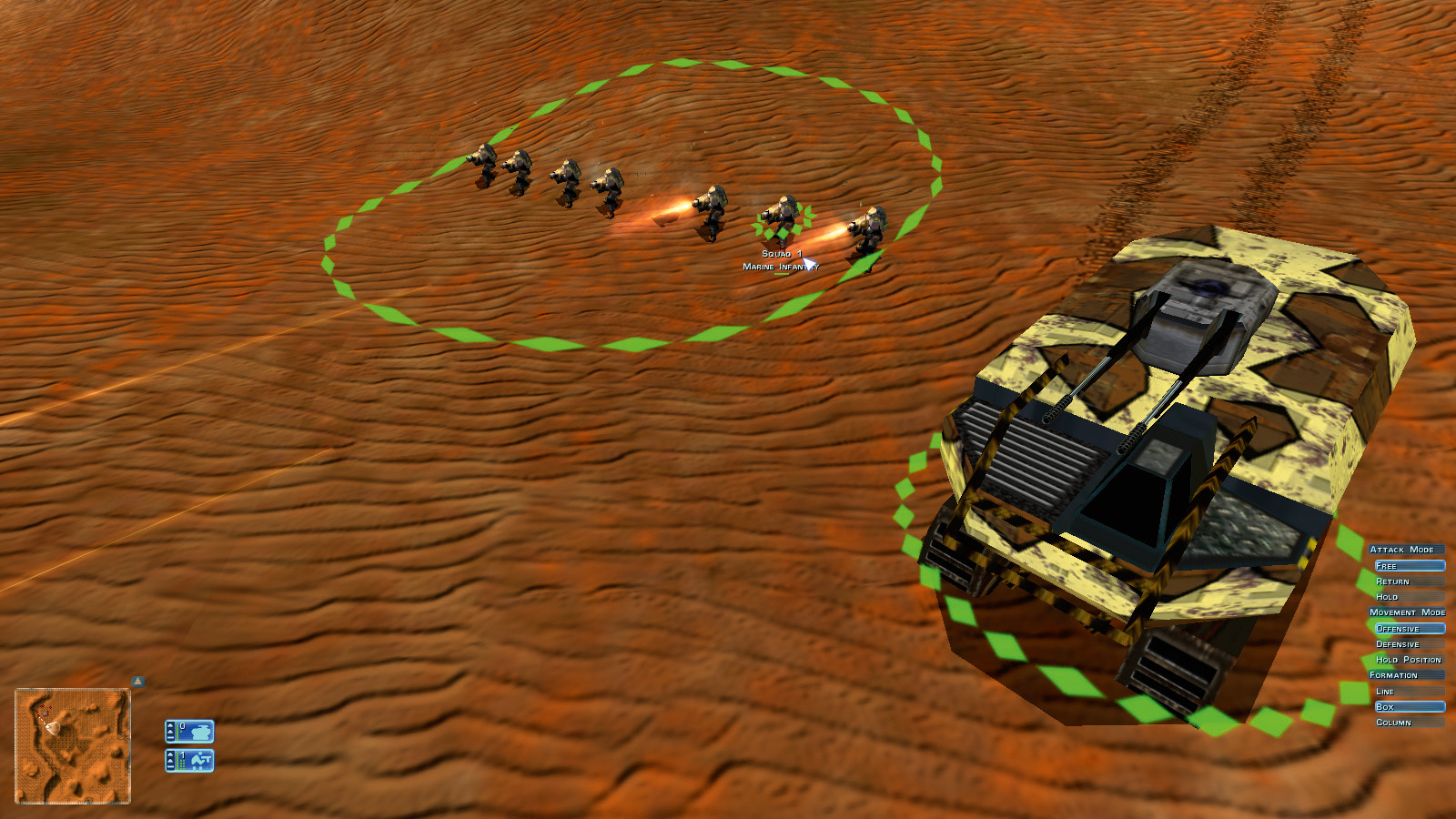The decline, evolution and future of the RTS

Free to play
MOBAs are also structurally well-suited to free-to-play revenue models—they’re ideal platforms for microtransactable accessories because they encourage players to form a bond with a particular character, and the absence of an upfront cost naturally makes for wider adoption. According to a March 2015 report from market researcher EEDAR, League of Legends and Dota 2 reap the greatest proportion of their revenue from so-called vanity items. Obliged as they are to look at the bigger picture, we can assume RTS players aren’t quite as susceptible to such temptations—especially when they affect the balance of power.
“In general, RTS players want a perfectly balanced game,” says David Pottinger. “They want to know everything there is to know ahead of time. They want skill to be the only determining factor in who wins the game. Free-to-play games, on the other hand, tend to reward playing longer or, gasp, paying actual money. That doesn’t usually mix well with an RTS.”
Campaigns are difficult and costly to make, and even more so to make well.
One particularly sad consequence of free-to-play and the MOBA’s rise is diminished buzz around singleplayer modes in RTS campaigns—fully fledged campaign options with cutscenes and scripting are few and far between, with many teams preferring to offer simple skirmish modes against the AI. Joe Bostic feels this is short-sighted. “PvP is inherently intimidating and so for those people that avoid PvP, the campaign is there to provide entertainment. It is debatable whether [AI skirmishes are] a sufficient substitute for a campaign. I would argue that it is not, at least for the traditional pay-to-play monetisation model that RTS games use.”
Comes agrees that the majority of players still play singleplayer campaigns over multiplayer or AI skirmish, but in an uncertain market, the associated expenditure can be hard to justify. “Campaigns are difficult and costly to make, and even more so to make well. Few companies want to take on that sort of risk to pour millions of dollars into a campaign for a small genre.”

Hardware jumps
Like their peers in the action genre, RTS teams have wrestled at length with the implications of new interfaces and peripherals—from the frustrating ambiguities of motion or voice control, to the explosion of touch-sensitive games on tablet and mobile. As Comes points out, strategy game developers have found success on mobile with tower defence, a type of game that can generally be played with one hand.
Wardell contends, however, that “true” RTS games for touchscreens are a “dead end”, because the interface isn’t responsive or precise enough to allow micromanagement. Hence intriguing departures like Offworld Trading Company, which doesn’t feature units in the usual sense—instead, players wage war using market forces, striving to devalue each other’s stock to the point that they can buy an opponent out. In addition to being a fascinating experiment in itself, this also makes the game more playable on tablets, where such routine actions as drag-selecting can be a frustrating chore.
David Pottinger takes a more hopeful view, having recently completed a fantasy RTS, The Incorruptibles, for iOS devices. “That was a transformative project for us at Bonus—without the weight and expectations of Age, we were free to just go make something we found fun. It takes a lot of inspiration from Age, but being mobile it ends up as a very different second-to-second experience. The games are shorter and you control things at a higher level. But, you’re still agonising over where to spend your food, wood and stone.”
The biggest gaming news, reviews and hardware deals
Keep up to date with the most important stories and the best deals, as picked by the PC Gamer team.
Will RTS developers have better luck with the latest virtual reality headsets? Comes is a believer. “I think VR will play a significant role in the industry and all genres in the next few years,” he says. “I personally believe that by 2020 over 5% of Americans will have an empty room in their house dedicated to VR. It’s that compelling.” Joe Bostic, however, says that he doesn’t see a pressing need for VR “when it comes to RTS games that stick with the traditional design model, where you are a battle commander overseeing simultaneous military battles and production operations across a battlefield.”
He adds: “that kind of gameplay needs an overview perspective rather than the immersive perspective that VR excels at. There have been some RTS games that put the player in the role of a commander right in the battle, such as Battlezone, and in that style of game, VR would greatly enhance the experience. But there are very few games that do this since it becomes much harder to control multiple units from that perspective, and it is much harder to have a PvP mode that works well from that perspective.”

New arrivals
For Brad Wardell, the future of the RTS is a question not of interface but of raw computing power. “The biggest opportunity we have going right now is the rise of DirectX 12, plus 64-bit and multicore processing as a standard game setup.” It’s a point illustrated by Stardock and Oxide Games’s Ashes of the Singularity, a behemoth of an RTS which supports clashes between thousands of units simultaneously.
Wardell concedes, however, that Steam and HTC’s Vive headset—which uses two lasers to track your movement around a room, in addition to wand controllers for gesture input—has the potential to give rise to new flavours of strategy game. “Imagine being able to walk around a space battle that is happening in a space the size of a large room. You could walk around and give orders to individual squadrons and move your finger to link them to their target and watch them fight it out.”
By happy coincidence, a project corresponding to this description does in fact exist, though it’s too early in development to discuss at any length. MoonStrike is the work of former Gears of War designer and Bitmonster co-founder Lee Perry. For Perry, the real-time strategy genre’s recent troubles follow a familiar narrative, and setbacks shouldn’t be taken to heart.
“There’s this thing that happens with many genres where the first, formative games establish the norms, and then it’s iterated on, and before you know it you end up with a genre that primarily appeals to the diehards. I love when any designer is willing to step back and reassess the foundation, and attempt to make it more accessible to a new batch of players, or even just do something novel with the presentation.”
If the RTS now sits in the shadow of the MOBA and other genres, Perry argues that it will always be worth returning to, because there’s so much that can be achieved with the basic mechanics. Coming from a relative newcomer to the genre, it’s a hopeful note to end on. “How combat works, how units are produced, what the terrain and different elevations offer, initial setup and build phases, the scope of conflict, campaign structures, the depth of the tech trees, where tactical decisions are presented to the player... how many other genres have that many knobs to turn? It’s a truly inspiring canvas to work on for a designer.”

